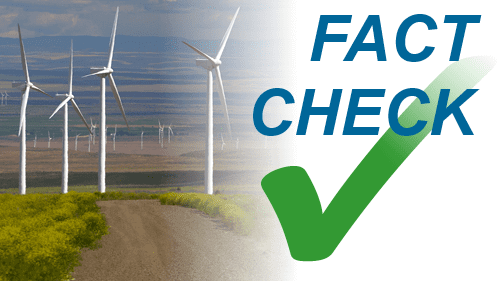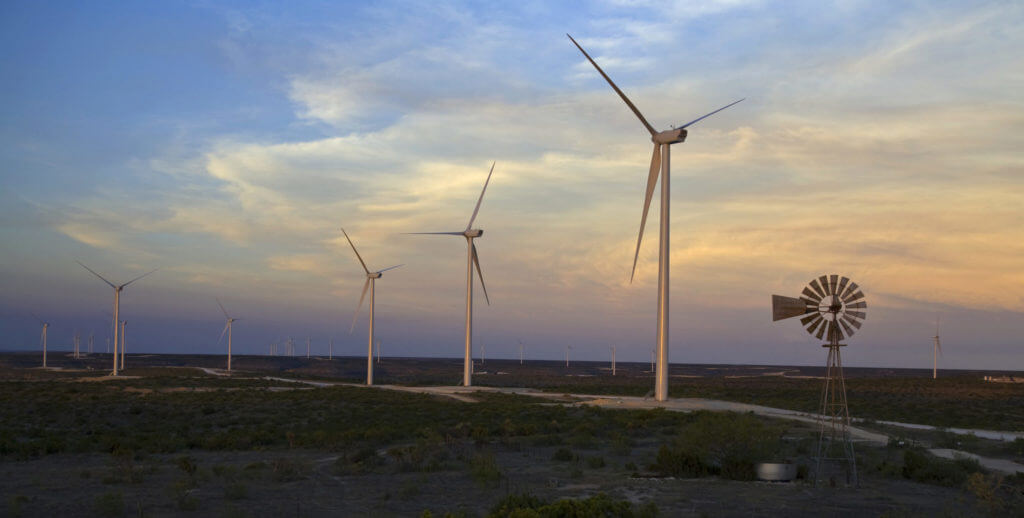Earth Day good news: Wind energy's costs decline, contributions to energy mix grow
Two new data points from the Department of Energy should give everyone something to celebrate. Last week DOE released its annual comparison of the costs of different electricity sources and wind came in lower cost than all conventional sources of generation except one, only slightly higher than natural gas even at today’s abnormally low natural gas prices.
Wind energy costs declined dramatically since last year’s assessment, down to $80.3/MWh from last year’s $86.6/MWh, a decline of more than 7%. The cost of energy from combined cycle natural gas power plants remained relatively constant at $66.3/MWh, down only 1% from last year’s figure.
Other DOE data confirm the marked decline in wind energy’s costs, with data based on real-world wind prices showing even lower. DOE’s annual wind market report indicates the price of wind energy power purchase agreements declined 43% over the 2009-2012 time period to a low of $40/MWh in 2012, and those declines appear to have continued over the last year based on recent public announcements of shockingly low-priced wind power purchase agreements. In wind-rich areas the costs have fallen even lower — with some purchases being recorded in the $20-30/MWh range.

A major driver of the cost decline is improved technology and larger turbines providing access to higher quality wind energy resources, as well as reduced costs due to the expansion of the domestic wind energy supply chain. Utilities are also taking advantage of newly-built transmission upgrades that are opening up extremely high quality wind resource areas for development, as highlighted in AWEA’s just-released Annual Market Report.
The drop in wind energy costs is not just good news for consumers, but it also gives us something to celebrate on Earth Day. As New York Times columnist and Nobel laureate economist Paul Krugman noted last week in his column, “Salvation Gets Cheap", the declining cost of renewable energy has caused the Intergovernmental Panel on Climate Change to express renewed optimism and slash their estimates of the cost of addressing climate change down to a mere 0.06 percent of annual economic growth.
In fact, in a virtuous cycle, declining wind energy costs have led to greater wind energy deployment, which allows economies of scale that further drive wind’s costs down, and so on. U.S. wind energy saved around 100 million tons of carbon dioxide pollution in 2013 alone, the equivalent of taking almost 17 million cars off the road.
That leads us to our second DOE data point. Today DOE released its monthly data on electricity production and market share, and wind energy continued its dramatic growth into 2014.
In January U.S. wind energy produced a record 18 million MWh, the highest monthly total in history, enough electricity to power the equivalent of 20 million typical U.S. homes at average usage rates. Wind energy provided 4.86 percent of all electricity produced in January 2014, a remarkable feat given that sustained record cold caused January to set a new record for winter electricity demand. Wind energy output in January was up 23% from January 2013.
As AWEA has previously highlighted, wind energy repeatedly proved its reliability and value through the rest of the winter by keeping the lights on and providing large quantities of extremely valuable electricity when grid operators needed it most. Wind continued its streak by providing 14 million MWh in the shorter month of February, for 4.3 percent of total U.S. electricity production.
Wind energy continues to grow, with a record amount of new wind capacity currently under construction. For Earth Day we can celebrate that its environmental benefits also keep growing.




